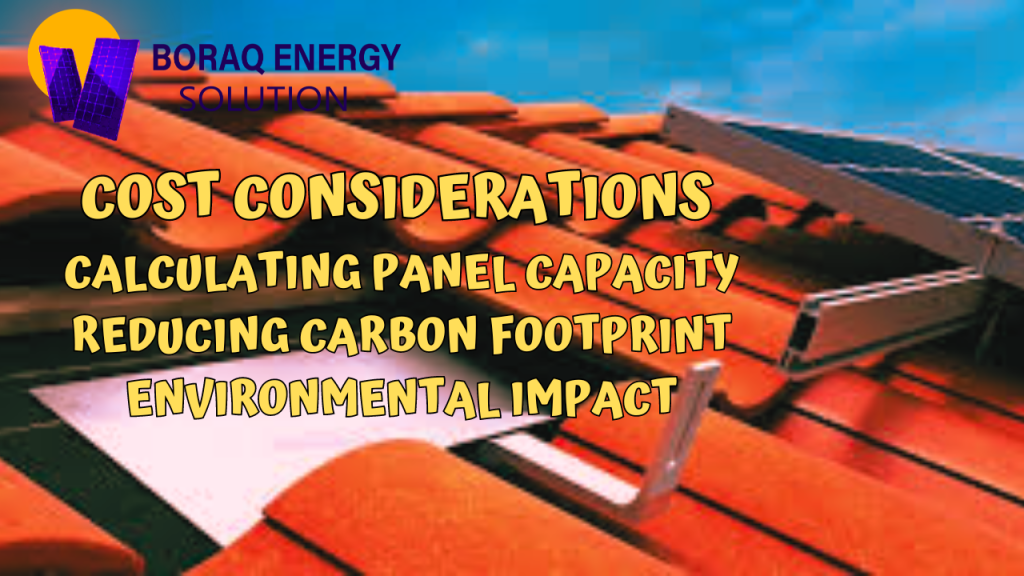How Many Solar Panels Can I Fit on My Roof? Sun powered energy has turned into a well known decision for mortgage holders hoping to decrease their carbon impression and lower their power bills. When thinking about installing solar panels, one common inquiry is, “How many solar panels can I fit on my roof?” Let’s look at the factors that affect how many solar panels your roof can hold and how to figure out what the best capacity is for your home. An Overview of Solar Panels Sun powered chargers are gadgets that bridle daylight and convert it into power, offering an inexhaustible and maintainable energy source. They comprise of photovoltaic cells that produce direct flow (DC) power when presented to daylight.
Understanding Solar Panel Installation
Before determining the number of solar panels your roof can accommodate, it’s essential to understand the installation process. Several factors influence the installation, including your energy needs, available roof space, and environmental considerations.
Factors affecting installation
Factors such as roof orientation, tilt, shading, and obstructions can impact the efficiency and effectiveness of solar panel installation.
Calculating energy needs
Assess your household’s energy consumption to determine the appropriate solar panel capacity required to meet your electricity demands.
Assessing Roof Space
The amount of available roof space plays a crucial role in determining the number of solar panels your roof can accommodate. Conducting a thorough assessment of your roof’s dimensions and layout is necessary.
Importance of roof assessment
A detailed roof assessment helps identify the available space for solar panel installation and any potential obstacles or obstructions.
Available roof space
Measure the dimensions of your roof, considering factors such as pitch, orientation, and shading from nearby structures or trees.
Determining Solar Panel Capacity
Calculating the capacity of solar panels involves converting energy units and considering factors such as sunlight exposure and panel efficiency.
Conversion of energy units
Understand the conversion between energy units, such as megawatt-hours (MWh) to kilowatts (kW) and amps to kilowatts.
Calculating panel capacity
Estimate the power output of solar panels based on their wattage and the average sunlight exposure in your area.
Factors Influencing Solar Panel Installation
Several factors influence the installation and efficiency of solar panels, including roof orientation, tilt, shading, and obstructions.
Roof orientation and tilt
South-facing roofs with a tilt angle matching your latitude typically receive the optimal sunlight exposure.
Shading and obstructions
Shading from trees, buildings, or nearby structures can significantly impact the performance of solar panels.
Estimating Solar Panel Requirements
Utilize online tools and calculators to estimate the number of solar panels required for your home.
Using online tools
Online solar calculators help assess your energy needs and recommend the appropriate solar panel capacity for your home.
Estimator 2.0 tool
The Estimator 2.0 tool recommends the optimal number of solar panels and conducts a comprehensive analysis of your roof’s solar potential.
Optimal Solar Panel Placement
Distribute solar panels across your roof to maximize sunlight exposure and energy production.
Distributing panels for efficiency
Strategically place solar panels to minimize shading and obstructions, ensuring optimal energy generation.
Cost Considerations
Consider the upfront costs and long-term savings associated with solar panel installation.
Calculating installation costs
Calculate the upfront costs of purchasing and installing solar panels, factoring in any available incentives or rebates.
Long-term savings
Assess the potential savings on electricity bills over the lifespan of the solar panels, considering factors such as energy prices and system efficiency.
Environmental Impact
Notwithstanding monetary advantages, sun powered chargers add to ecological maintainability by lessening dependence on petroleum derivatives and bringing down fossil fuel byproducts.

Contributing to green energy
Generating electricity from solar panels reduces greenhouse gas emissions and dependence on non-renewable energy sources.
Reducing carbon footprint
By tackling sun oriented energy, property holders can fundamentally diminish their carbon impression and add to a cleaner, better climate.
Conclusion
Deciding the quantity of sun powered chargers your rooftop can oblige requires cautious thought of different variables, including accessible rooftop space, daylight openness, and energy needs. Homeowners can contribute to a greener and more sustainable future by making informed decisions regarding the installation of solar panels by evaluating these aspects and utilizing online tools.
FAQs about Solar Panel Installation
How many solar panels do I need?
- The amount of sunlight that gets through a roof, the amount of energy that is consumed, and the number of solar panels that are needed all play a role. Utilize online calculators or consult with a solar energy provider for personalized recommendations.
Will solar panels fit on my roof?
- Lead a careful evaluation of your rooftop’s aspects and format to decide whether it can oblige sunlight powered chargers. Factors like direction, slant, concealing, and impediments will impact the plausibility of establishment.
How do I calculate solar panel capacity?
- Take into account the wattage, the amount of sunlight they receive, and their efficiency when determining their capacity.Online tools and calculators can assist in estimating the optimal capacity based on your energy needs.
What factors affect solar panel installation?
- A few elements, including rooftop direction, slant, concealing, impediments, and accessible rooftop space, impact the establishment and productivity of sunlight based chargers.
What are the natural advantages of sunlight based chargers?
- By outfitting the sun’s sustainable power, sunlight based chargers diminish fossil fuel byproducts, decrease dependence on non-renewable energy sources, and add to a cleaner and more practical climate.

